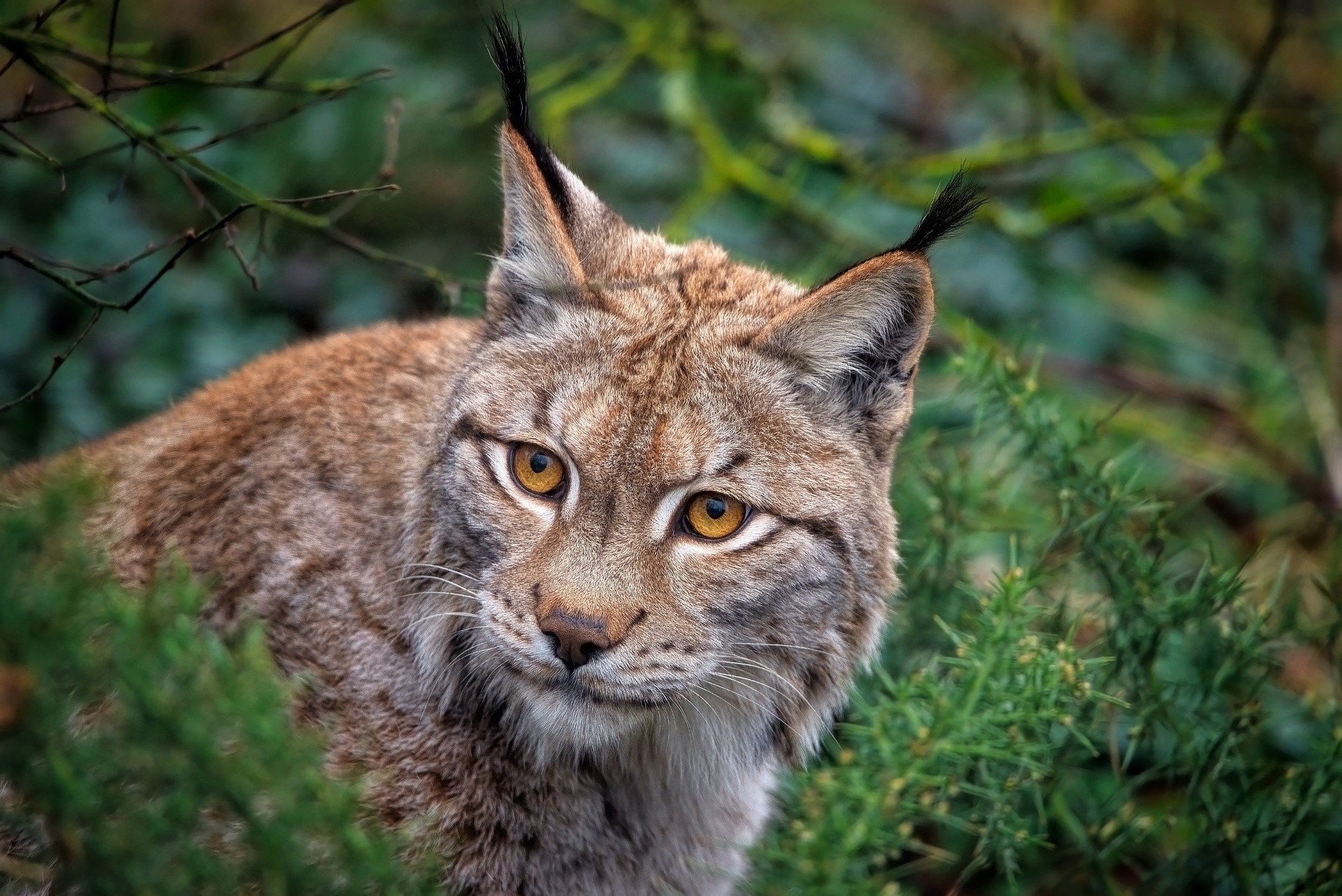Sweden, a land with iconic scenery, considers itself a nature-friendly country. However, looks can be deceiving, because under the surface, it has turned into a trophy hunter’s paradise that repeatedly violates the Habitats Directive, the EU's measures to protect endangered species.
Earlier this year, a letter co-signed by 29 NGOs was sent to the European Commission, requesting to re-open the infringement proceedings against Sweden regarding its wolf management policies and to investigate the legality of its lynx hunting. The EU is currently observing Sweden’s actions and has been since 2010, when several nature preservation organisations filed a complaint against the hunt for protected species in Sweden.
To understand why this is occurring, one must understand the system behind the decisions. The Swedish Environmental Protection Agency (Naturvårdsverket) has relegated hunting decisions to the 21 counties (Länsstyrelser) with the goal of creating locally anchored wildlife management. In every county, a delegation (viltförvaltningsdelegation) presides, consisting of 14 delegates: 5 from political parties, 7 from different branches such as hunting, tourism, and forestry, and lastly, 2 from nature preservation organizations.
This sounds like a balanced roster, but in reality, most of the seats are taken by the hunting interest. Studies have shown a severe overrepresentation of the hunting lobby. Figures such as 12 hunters against 2 nature preservationists are common during votes. There is also a common occurrence of county wildlife managers who, during weekdays, perform carnivore inventories while on the weekends they are part of hunting teams hunting the very same wildlife.
The bias stands unquestioned since the common mantra is that "hunters know best how to manage wildlife". This has, however, been proven deficient with one of the favourite edible game of Sweden, the moose, where the hunting quota was recently recalled in one of the counties before the season’s start due to the fact that the hunters have killed too many moose and the population is now facing a large decline.
Bizarre forms of wildlife management
The Swedish hunting interest, largely left free to do as they please, have indoctrinated concepts of "wildlife management" that have taken bizarre forms. An example is the annual competition called the Carnivore Campaign (Rovdjurskampanjen), where the participants earn points for every kill. Consequently, the winner, who is crowned "wildlife manager of the year", has often killed hundreds of foxes, badgers and birds.
Roughly 60 000 foxes are killed yearly in Sweden for sport, even though a study has shown that foxes keep down the spreading of tick-borne diseases as well as vole populations, which in turn protects the forestry.
It’s even worse. The doctrine of keeping wildlife "kept and managed" dates back to Third Reich ideals. Nazi leader and later convicted war criminal Hermann Göring became an honourary member of the Swedish Hunter’s Association (Svenska Jägareförbundet) in 1938. The Association was given the task of managing wildlife back in the same year and still receive over 5 million Euro per year from the government for this task.
Even though only 2.8 percent of the Swedish population is comprised of hunters, the leading politicians are heavily overrepresented among them. The prime minister, the minister of industry and the minister of rural affairs are all avid hunters. The latter, a member of the Christ Democrats Party, posts pictures of dead wolves on his social media and attends the Hunter’s Association’s yearly meeting, promising to improve the country’s already disproportionate hunting privileges.
The new Swedish government also issued recently directives for a review of the public management structure for hunting and wildlife with a possible separate authority handling these issues. Among others the review will consider changes in the responsibility for managing weapon licenses, a task that the police have handled so far. A large number of nature-loving citizens of Sweden are sceptical of this since the bias today is enormous and a separate authority consisting of most likely hunters would make matters only worse.
Taking a look at the politics and actions regarding the three main carnivores in Sweden depicts an aggressive hunting policy.
Largest bear hunt in history
The Swedish Red List, produced by the Swedish Species Information Centre (SLU), includes the brown bear and evaluates the bear population as near threatened. Against these findings, the largest bear hunt in history took place this year in August, with a record number of 649 bears to be killed, constituting a quarter of the entire population.
Trophy hunters from all over the country were eagerly awaiting this moment and more than 30 bears were shot before lunchtime on the first day. The motive is to proactively protect reindeer herds, but in Gävleborg County, where there is no stationary reindeer herding, 140 bears were to be shot anyway, a fact that exposes that there are ulterior motives for the hunt.
During the first week of the bear hunt, four hunters were injured by bears defending themselves, among them a 14-year-old boy. Attacks on non-hunters are practically non-existent.
Meanwhile, companies in nature tourism plead with the counties to curb the hunting since they have paying tourists who want to see the animals live and especially during high season in tourism, which coincides with the bear hunt, but their requests are regularly discarded and sometimes do not even receive a reply.
Reducing the small number of wolves
The new government started their political agenda in 2022 by suggesting reducing the already fragile (classified as seriously threatened) wolf population to a third of its current number. This is by many considered a largely populistic venture, attempting to procure votes from the rural population and farmers who keep cattle. The current ministers were seen posing in hunting outfits in many social media posts preceding the election.
An international group of scientists wrote in Science about the dangers and impeding risk of genetically annihilating the sensitive wolf population. Sweden’s wolf population of 300 – 450 individuals is one of the proportionally smallest ones in the EU considering the fact that Sweden is the fifth largest country in Europe with less than 11 million inhabitants.
There is government support for fencing against predators, as well as NGOs offering help with the installation. Most, if not all, attacks on cattle occur on unfenced farms, and these attacks are highlighted in the media and used as a motive to diminish the wolf population. There are many examples of farmers who have successfully avoided attacks by fencing, but their voices are seldom heard since the media prefers pictures of bloody sheep and angry farmers to contented ones.
Record hunt of Lynx
The lynx population, red-listed as vulnerable, also endured a record hunt of 188 individuals in March this year. Over 116 000 voices were raised against it in two different petitions. The motive of the hunt is to protect farm animals, but in central and southern Sweden, where 169 lynx were issued for hunting, only 50–100 sheep are killed by lynx each year, according to statistics.
The trophy hunting motive is apparent here as well, since there is no logic in killing 169 cats to protect 50–100 sheep. Simultaneously, neighbouring countries like Poland have EU-funded projects where the lynx are being reintroduced to the wild, naturally protected from all hunting.
International studies published by the EU show that hunting wolves is detrimental to protecting cattle since the packs become unstable and the young, inexperienced wolves then turn to easy prey such as sheep. This contraintuitive policy is seemingly the intention of a government intent on creating rifts rather than bringing people (and nature) together.
While the EU has issued its initiative to protect at least 30 percent of land and sea before 2030, Sweden is going in the opposite direction. Citizens are submitting complaints to the local counties and the government, as well as to the EU Commission. Lawyers from preservation NGOs are doing so as well, but breaking through the thick red tape that the hunting lobby has instilled is proving to be difficult.
The Swedish Hunter’s Association has a full-time lobbyist working in Brussels whose primary goal is to delay and obstruct any protective measures for wild animals. The wildlife in Sweden is waiting for the EU to take a stand. Since the system is too corrupt to correct itself, its wildlife desperately needs assistance.
Misha Istratov is the CEO of Elithus, an environmentally pioneering Swedish building company, as well as a journalist debating topics in sustainability and wildlife.


